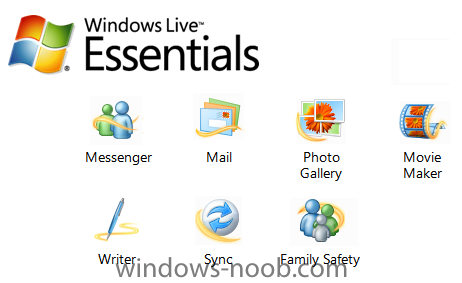-
Posts
9247 -
Joined
-
Last visited
-
Days Won
369
Everything posted by anyweb
-
Things may be turning around in the PC market, according to new analysis by IDC. IDC reported this week that it expects revenue in the 2010 PC market to surpass a peak that was last set in 2008. The main growth driver will come from mainstream notebooks, IDC predicts, based on its June "Worldwide Quarterly PC Tracker" report. Netbooks, which IDC calls "mininotebook PCs," will play less of a role in driving PC sales, staying at less than 12 percent of sales, the analyst firm predicts. The desktop PC is not quite dead yet, with IDC expecting growth of "over 8% in 2010." This positive expectation is based on the idea that businesses will start buying new PCs and "the popularity of All-in-One PCs." It also arises from a low earlier benchmark -- or, as IDC puts it, "a dismal 2009" for desktop PCs. However, a table accompanying IDC's announcement shows relatively flat figures for desktop PC sales -- at least in the U.S. market -- over the next four years. Global PC sales grew 27 percent in the first quarter of 2010 compared with last year's first quarter, according to IDC. The analyst firm expects to see a growth rate of 20 percent overall for global PC sales for the whole of this year. The market will face some disruption from new portable PCs hitting the market, according to Jay Chou, an IDC research analyst. "New devices such as e-readers and media tablets will pose disruptive challenges to conventional usage models while opening up intriguing possibilities in consumer and mobile business spaces," Chou said, in a released statement. The success of the new devices will depend on balancing the benefits of portability with having the ability to produce "creative content" on the new devices. IDC forecasts that total worldwide PC shipments will grow from 296 million in 2009 to 570 million in 2014. In the U.S. market, total PC shipments will grow from 70 million in 2009 to 121 million in 2014, IDC predicts. Forrester Research analysts, looking at the U.S. consumer PC market, also see some upward trends. "Over the next five years, PC unit sales across all form factors will increase by 52%," stated Forrester analyst Sarah Rotman Epps, in a recent blog post. "In fact, desktops are the only type of PC whose numbers will be fewer in 2015 than they are today -- and even desktops will benefit from innovation in gaming and 3D." Forrester predicts that "growth will come from new form factors like tablets, but laptop sales will increase steadily also." Tablets will start outselling netbooks in 2012, according to Forrester's report, "The US Consumer PC Market In 2015." Forrester's report, like that of IDC, also sees PCs as not quite dead yet. "Fewer desktops will be sold in 2015 than in 2010, but in 2015, they'll still be used by more consumers than any other type of PC," Rotman Epps stated. via > http://redmondmag.com/articles/2010/06/18/pc-sales-to-grow-20-percent-this-year.aspx?utm_source=windows-noob.com
-

Problem the installation sccm 2007
anyweb replied to talal awadh's topic in Configuration Manager 2007
download it aqain then and see what happens, perhaps its corrupt -
sure thing, to do this in MDT Deployment workbench, right click on your Deployment Share, choose Properties, click on the Windows PE X86 Settings tab and browse to the background file you want to use
-

visual studio install
anyweb replied to bbunjevac's question in Deploy software, applications and drivers
are you trying to install Microsoft Visual Studio 2008 professional ? if so it has several dependancies (like .net and so on, it's all listed in the help files) that need to be installed first, how have you created the package and are you using msi switches ? -

Problem the installation sccm 2007
anyweb replied to talal awadh's topic in Configuration Manager 2007
are you installing from a dvd ? if so try another one ? have you tried disabling antivirus ? can you give more details about how you are trying to install -
ok then, update it to SCCM 2007 SP2 and you should be good
-

Problem the installation sccm 2007
anyweb replied to talal awadh's topic in Configuration Manager 2007
have you tried logging out, deleting the user profile, logging in again and trying it ? have you tried different media ? -
you'll need to update SCCM 2007 SP1 to SCCM 2007 SP2 cheers niall
-
is it windows xp media center edition ?
-
look at the program rerun behaviour of your task sequence advertisement, what is it set to ?
-
if you want software updates installed in a specific order then you'll have to manually install those updates using an Install Software task sequence step, the install software updates step will install whatever if feels is nescessary for that computer, so you could test it again and again and see what it installs first..
-

Updates are not being installed automatically
anyweb replied to anyweb's question in Software Update Point
sounds a bit messy, are you intending to do software updates via SCCM or not ? if not just remove the software update client agent and see does that help ? -
this is a known issue, i don't know if it's documented anywhere but it's certaintly been noticed before, so i'd say it's safe to disregard if everything is working ok otherwise
-

Deploying Applications with SCCM 2007 R2 SP1
anyweb replied to CaptainJack's question in Deploy software, applications and drivers
is your computer using the 64bit os ? then check the c:\windows\syswow64\ccm folder instead -
what does the smsbkup.log say ? is sql server running on the same server as you are backing up ?
-
edit the unattend.xml using wsim, there are guides right here to do that. This one will give you some ideas http://www.windows-noob.com/forums/index.php?/topic/1660-customising-windows-7-deployments-part-1/
-

Total noob - wds wont get past dhcp..../
anyweb replied to anmb's question in Windows Deployment Services
have you setup a DHCP server ? -

Scanstate in PE Question?
anyweb replied to defiantj3's question in Microsoft Deployment Toolkit (MDT)
as it's offline why not use the X86 windows PE and X86 scanstate, it should migrate the data no problem -
hi and welcome, have you loaded any network drivers for the vmware nic in both the x86 and x64 boot.wim ?
-

Microsoft: Windows is better for photos than a Mac, hands down
anyweb posted a topic in Windows News
On the Windows Team Blog, Microsoft has decided to post an inside look into the new Windows Live Essentials and what users can expect. Scheduled for beta release in the coming months, the updated suite will bring a boat-load of new features. Among the touted apps is the new versions of Live Photo Gallery. According to CNet, Microsoft's very own Brian Hall went as far as saying that the new Photo Gallery is "better for photos than a Mac, hands down." Neowin has previously posted a look into the new Windows Live Essentials Photo Gallery. However, further analysis of the new program is essential, as Hill's claim is a bold one. For a long time now, Apple's iPhoto has been the king of photo management. It allows you to organize photos, improve them, create slideshows, share them online, and much more. It even allows you to view your photos on a map using geotagging. This is, of course, assuming your camera has GPS capabilities (like on smartphones). Microsoft highlights the following capabilities of its new Windows Live Photo Gallery: * Auto Adjust - one click that fine-tunes exposure, color balance, angle, and sharpness * Retouch - remove blemishes, or even entire people * Batch Editing - do same action to a number of photos at once * Photo Fuse - use similar photos to create a perfect picture (eyes closed example) * Sharing - the ability to publish your photos directly to social media sites, online storage locations, and send via email or chat * Sync - the ability to have all of your files on the go, as well as synched across all of your PCs * Slide Shows - in a few clicks, create and share slide shows with transitions and visual effects While Microsoft is definitely pushing many welcome and needed features, saying that it's better for photos than a Mac's iPhoto experience is hard to agree with. While Mac users are sure to jump at Hill's comment as being nothing short of asinine, Microsoft's improvements are definitely nothing to scoff at. Updates, like the ones for Photo Gallery, show a true commitment to improving the media experience of the Windows platform. Innovation is nice to see anywhere users can get it. via neowin -
The latest market share figures from IDC about servers show that Windows is by far the most popular server operating system in terms of unit sales, increasing its market share even further. Linux, on the other hand, saw its market share in the server market sink a little. I don't really know what to make of these figures, but alas, let's just get them out there. In the first quarter of 2010, Windows had a 75.3% market share in terms of units sold, up from 73.9% in the fourth quarter of 2009. Linux dropped slightly from 21.8% in the fourth quarter of 2009 to 20.8% in the first quarter of 2010. UNIX dropped from 4.4% to 3.6%. When you look at the revenue side of things, the situation is even better for Windows, and also quite good for Linux. * Microsoft Windows server demand was positively impacted by the accelerating x86 server market, as hardware revenue increased 33.6% and unit shipments increased 28.3% year over year. Quarterly revenue of $5.1 billion for Windows servers represented 48.9% of overall quarterly factory revenue. This is the highest percentage of server hardware revenue that Windows servers have ever represented. * Linux server demand also improved sharply in 1Q10, with revenue growing 20.4% to $1.7 billion when compared with the first quarter of 2009. Linux servers now represent 16.2% of all server revenue, up 2.1 points over 1Q09. Architecture-wise, non-x86 systems are taking heavy hits. "The market for non-x86 servers, including servers based on RISC, EPIC, and CISC processors, declined 25.9% year over year to $3.6 billion in 1Q10," IDC writes, "This is the fourth consecutive quarter that non-x86 servers have been outperformed in the market by x86 servers." There are a few qualifying notes here. The big one is this: these figures only account for servers sold with software pre-installed, and completely ignore servers where software has been installed manually. If there was some way to include those as well, I'm sure Linux would see a big boost. What these figures do show is that despite the usual deriding remarks people make about Windows, Microsoft's products are simply doing very, very well in the server space. Windows Server 2003, 2008, and 2008 R2 have all been received very well, and it seems like sales figures confirm this. via > osnews.com
-
why do it that way ? have you looked at the build and capture guide here ?
-

Proper usage of the /modify to install Outlook 2007
anyweb replied to MSnoob's question in Deploy software, applications and drivers
what version of Microsoft Office 2007 are you using here ? -
Offline Mode in WinPE is a great way of migrating user data in SCCM, are you using it ?
-
how are you trying to deploy Office 2007 ? are you not seeing the advertisement on the clients or what ?



